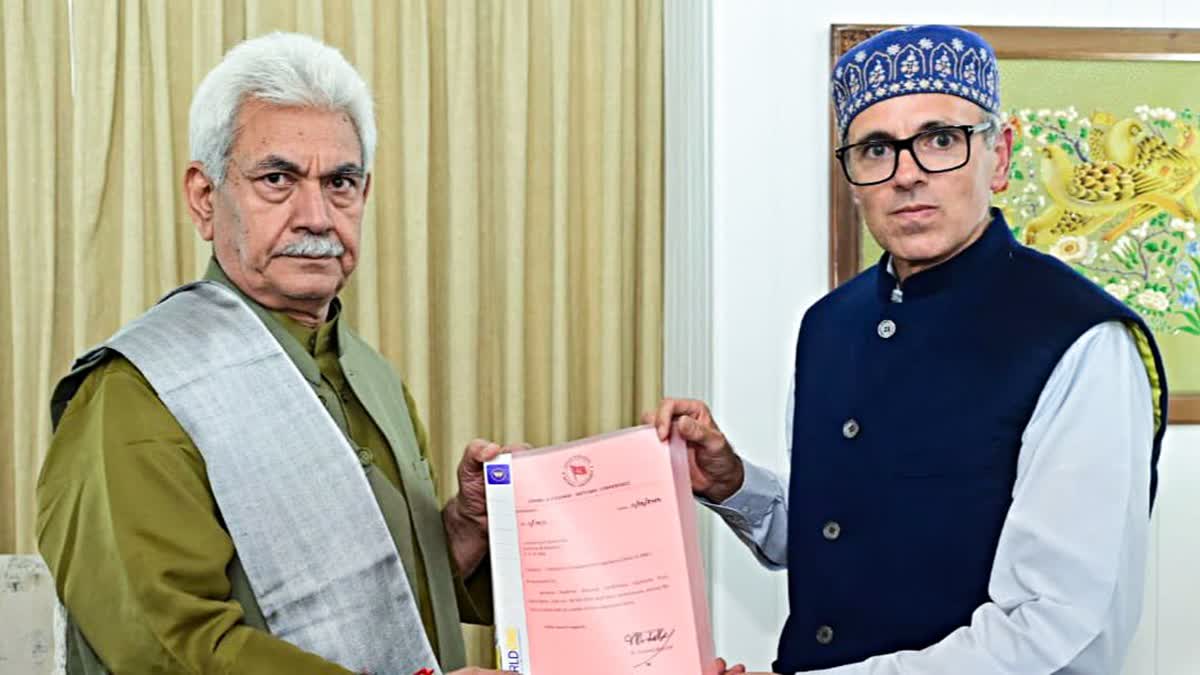Srinagar: The Union Government is expected to revoke President's Rule in Jammu and Kashmir to pave way for the swearing-in of the newly elected Omar Abdullah-led INDIA bloc government in the Union Territory. Here's an explainer on why this move is essential and its impact on the region's governance.
Why Was President's Rule Imposed?
President's Rule was first imposed in Jammu and Kashmir on October 31, 2019, following the abrogation of Article 370 and 35A and downgrading of the region into two Union Territories — Jammu and Kashmir, and Ladakh. The Union Home Ministry issued a presidential order under Section 73 of the Jammu and Kashmir Reorganisation Act, 2019. This move followed the collapse of the Mehbooba Mufti-led coalition government in June 2018, when the Bharatiya Janata Party (BJP) withdrew its support to the BJP-PDP coalition government.
After the fall of the government, Jammu and Kashmir was placed under 'Governor's Rule' for six months, as per Section 92 of the state constitution. When that period ended, the Union Government extended Central control by imposing President's Rule, which continued until the present day.
Why Does President's Rule Need to Be Revoked?
Under President's Rule, several provisions of the Jammu and Kashmir Reorganisation Act that relate to the functioning of the Legislative Assembly were suspended. For the new government to take office, these provisions must be reinstated. Officials have confirmed that President Droupadi Murmu is expected to issue a notification soon to formally revoke the proclamation made in 2019.
"The proclamation of President's Rule needs to be revoked to allow the elected government to take oath," said an official source. Without this revocation, the region cannot have an operational Legislative Assembly or a fully functioning government.
What Does the Revocation Process Involve?
The revocation of President's Rule in Jammu and Kashmir requires approval from the Union Cabinet. Once the Cabinet concurs, President Murmu will issue the necessary notification to formally end the Central administration in the region.
The 2019 proclamation under Section 73 was designed to prevent a constitutional vacuum in the newly formed Union Territory, which lacked an operational Legislative Assembly. Since Jammu and Kashmir is now set to have an elected government, this Central control must be lifted.
What's Next for Jammu and Kashmir?
The revocation of President's Rule marks a significant step toward restoring democratic governance in Jammu and Kashmir. After nearly five years of direct control from the Centre, the region is on the verge of having an operational Legislative Assembly and an elected government led by Omar Abdullah.
On Friday, Omar Abdullah, leader of the National Conference legislative party, met with Jammu and Kashmir Lieutenant Governor Manoj Sinha to formally stake a claim for forming the government, submitting letters of support from Congress and independent legislators.
